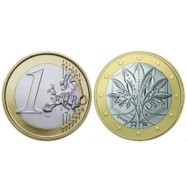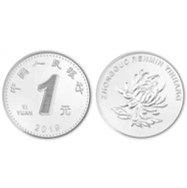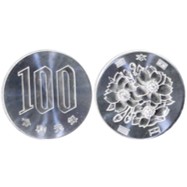Standard Coin Size
Dollar Coin

Euro Coin

Pound Coin

Chinese (RMB) Coin

Japanese (Yen) Coin

About Standard Coin Size
What standards do coin designs in various countries follow ?
1. Legal and Regulatory Standards.
This is the most formal layer of standards. The design of a nation's currency is almost always governed by law.
A. Authorizing Legislation: A country's parliament or congress typically passes a law that establishes the currency system. This law often specifies foundational elements, such as:
① Mandatory Inscriptions: The country's name (often in multiple official languages), the denomination (value) of the coin, and the year of minting are almost always required by law.
② National Symbols: Many laws mandate the inclusion of the national coat of arms, a national motto, or other state emblems on certain denominations.
③ Authority: The law designates which official or institution (e.g., the Treasury Secretary, the Central Bank Governor, or the Monarch) has the final authority to approve new designs.
B. Royal Proclamation (in Monarchies): In countries like the United Kingdom and Canada, new coin designs are officially approved and issued by a royal proclamation in the name of the reigning monarch, following advice from the government.
2. Traditional and Conventional Standards.
These are unwritten rules that have developed over centuries of coinage.
A. The "Heads vs. Tails" Convention: While the technical terms are Obverse (heads) and Reverse (tails), there is a strong tradition:
① Obverse: Almost universally features a portrait of a monarch (in kingdoms/empires) or a national symbol (in republics). For example, the UK obverse features the King, while the US obverse features past presidents and symbolic figures like Lady Liberty.
② Reverse: Features a design that changes more frequently, often celebrating themes of national importance (history, wildlife, achievements, etc.).
B. Consistency Across Series: Countries strive for a consistent look and feel across different denominations of the same series. This usually includes:
① A common obverse design (e.g., the same monarch's portrait on all coins).
② A unified font for the numerals and text.
③ A shared thematic element on the reverse (e.g., Australian coins all feature native wildlife).
3. Technical and Practical Standards.
Coins must function as money first and art second. Their design is heavily constrained by the needs of production and use.
A. Minting Process: Designs must be technically feasible to strike millions of times. This limits the level of fine detail and extreme relief (3D depth) to avoid excessive die wear and production errors.
B. Durability: Designs should not have overly thin, protruding parts that are prone to wear down quickly, making the coin unrecognizable.
C. Vending Machine Compatibility: In the modern era, coin designs must be machine-readable. This requires:
① Distinct Sizes: Each denomination must have a unique and consistent diameter.
② Clear Edges: Reeded (grooved), plain, or lettered edges help with identification and prevent counterfeiting.
③ Recognition: The combination of size, color (depending on metal), and edge design must be unique so automated systems can tell them apart instantly.
4. Thematic and Cultural Standards.
This is where national identity and public sentiment play a huge role. The themes chosen for coins are a reflection of what a country values.
A. Common Themes:
① National Identity: Founding fathers, monarchs, coats of arms, national monuments (e.g., the Lincoln Memorial on the US penny, the maple leaf on the Canadian coin).
② Flora and Fauna: Native animals and plants (e.g., the kiwi on New Zealand coins, the krugerrand springbok on South African coins).
③ History and Heritage: Commemorating important anniversaries, historical events, or cultural figures (e.g., the UK's extensive 50p coin series).
④ Cultural Symbols: Mythological figures, artistic motifs, or symbols of industry and progress.
B. Avoiding Controversy: Designs generally avoid living people (except monarchs), overtly political figures, or religious symbols that could be divisive (though this varies by country). The process is often conservative to maintain public trust in the currency.